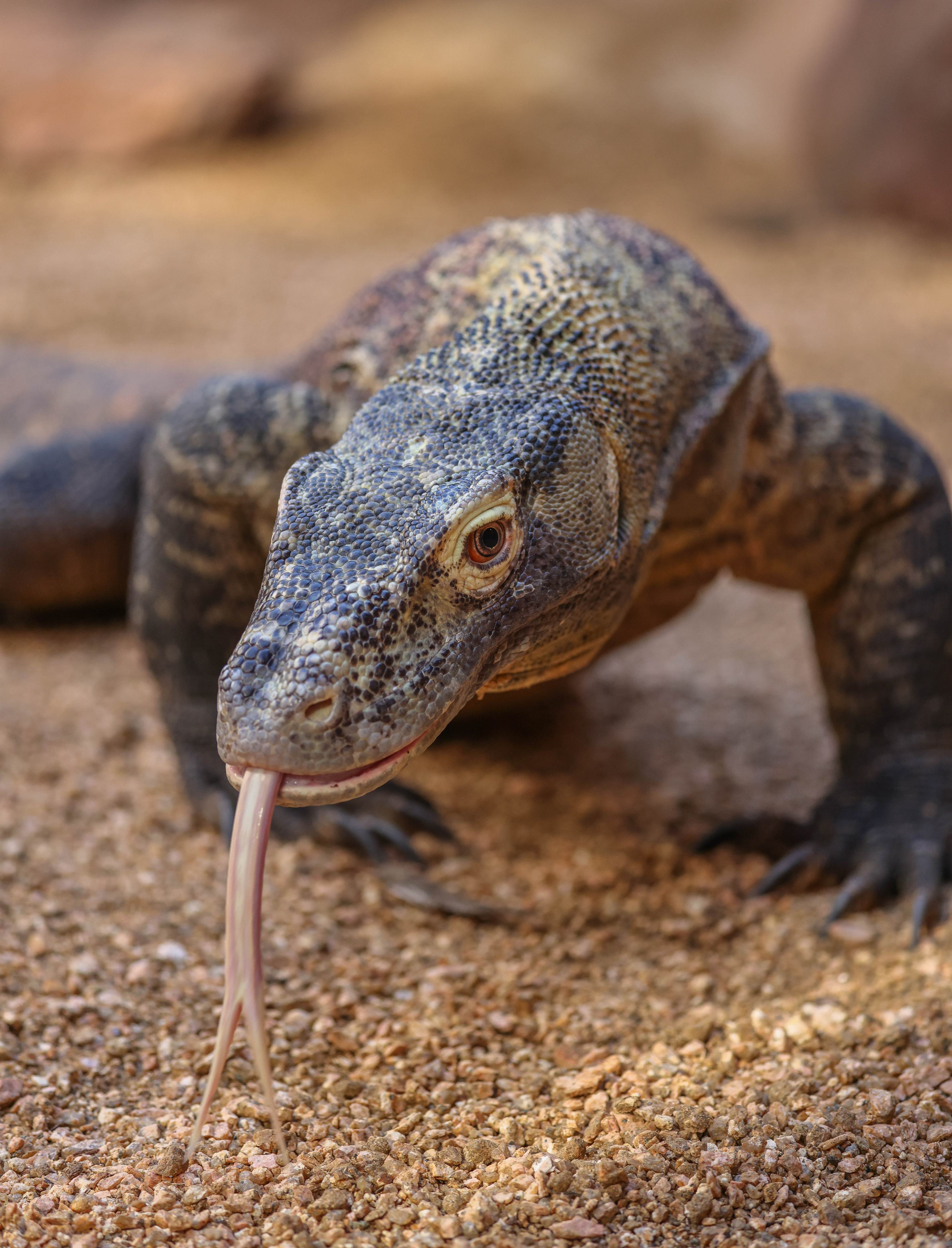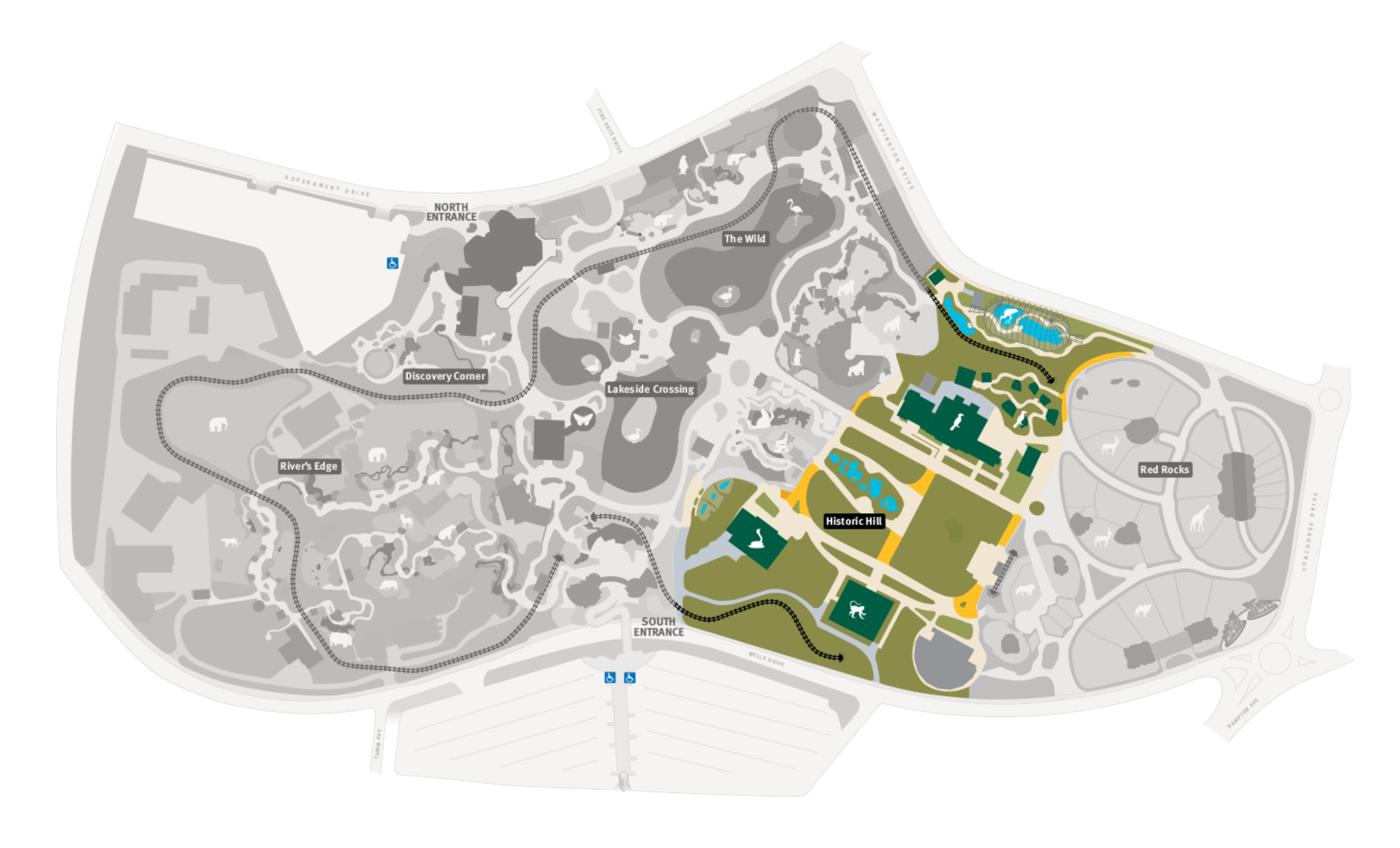
Komodo Dragon
Varanus komodoensis
Did you know?
- Komodo dragons are part of the monitor lizard family (Varanidae), a widespread group of lizards.
- They are the largest species of lizard and can weigh up to 300 pounds and reach up to 10 feet in length.
- Female Komodo dragons can reproduce asexually, a process called parthenogenesis.
- Komodo dragons possess proteins in their saliva that aid in taking down prey.
What's on the Menu
Komodo dragons will eat almost any meat, from small rodents to large water buffalo. Young dragons start with insects and small lizards, but by age 5, they move on to bigger prey like deer. As apex predators, they are at the top of their food chain.
On the Hunt
While Komodo dragons have good daytime vision for detecting movement and a small range of hearing, their sense of smell is their primary hunting tool. Though a Komodo dragon's initial hunt may fail, one bite from its serrated teeth and specialized saliva can kill prey within days. Using their forked tongues and Jacobson’s organs, they can "taste" the air to locate prey and determine its direction. Using its keen sense of smell, it will locate the carcass, which is often then shared among other dragons.
Threat Level
- Unknown
- Common
- Near Threatened
- Threatened
- Endangered
- Critically Endangered
- Extinct in the Wild
Endangered
The Komodo dragon faces a high risk of extinction.
Range
The Komodo dragon is limited to five islands in Indonesia: Komodo, Rinca, Gili Motang, Gili Dasami, and the western part of Flores Island.
Habitat
Prefers tropical forest but can be found in savannas and forests to grasslands and coastal areas.

We care about Komodo Dragons
The Saint Louis Zoo supports Komodo dragons in the Charles H. Hoessle Herpetarium. Learn more about how we are helping wildlife around the world.
Find this animal in Historic Hill

SAINT LOUIS ZOO ZONE
Historic Hill
Historic Hill is a lovely stroll through one of the oldest parts of the Saint Louis Zoo. From the 1904 World’s Fair Flight Cage to the Spanish architectural flavor of the 1920s in the Bird House, Primate House and Herpetarium to the finishing touches of our thoroughly modern exhibits, this area of the Zoo has a unique ambiance and a nostalgic history that make it a great destination.

